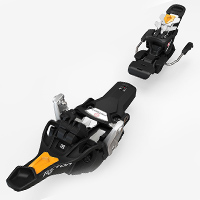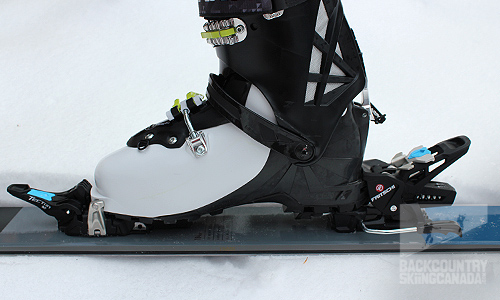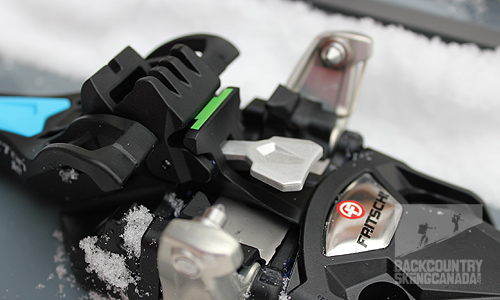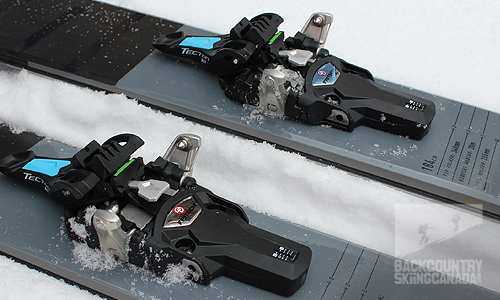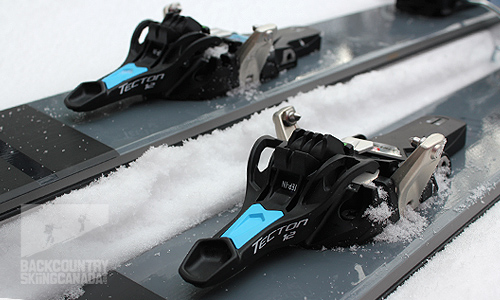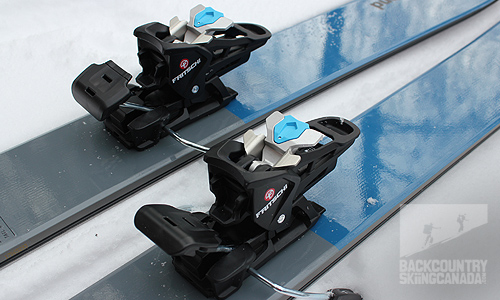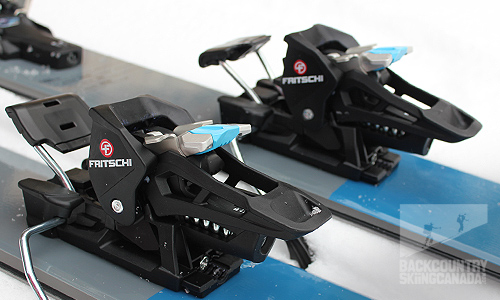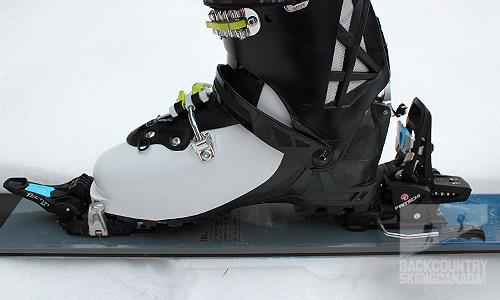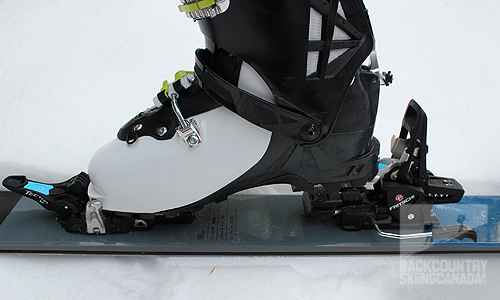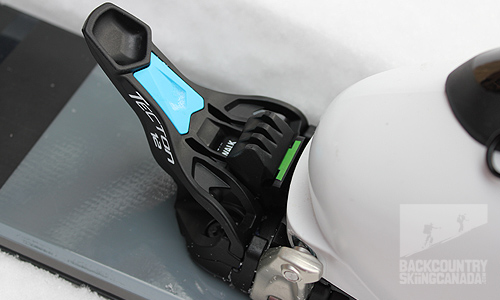


SITE LOGIN
-
REVIEWS
- Ski Gear
- Clothing
- Accessories
- Off-Season Gear
- Lifestyle
- Lodges and Accommodation
- Nutrition
- Manufacturers
- Destinations
- Training
- Gear of the Year
- Best New Summer Gear
-
Holiday Gift Guide
-
Holiday Gift Guide 2024
- Holiday Gift Guide 2024 Base Layers
- MSR Explore Revo Snowshoes
- Fieldsheer Backcountry Heated Jacket
- Fieldsheer Premium 2.0 Merino Heated Socks
- MEC Hut Booties and Slippers
- Arc’teryx Kopec GTX Shoe
- Arc’teryx Kragg Insulated Approach Shoes
- Gregory Verte 18 Backpack
- Grundens Deck-Boss Ankle Boot
- MEC Northern Light Vest
- Montec-Scope-Ski-Goggles
- Mountain Hardware Kor Airshell Hoody
- Mountain Hardware Kor Alloy Crew
- Arcade Atlas Belt
- Dynafit Ridge Dynastretch Jacket
- Shokz OpenRun Pro 2 headphones
- Buff Merino Move Multifunctional Neckwear
- Bootdoc Foot Warmer
- Cotopaxi Allpa 42L Travel Pack
- DPS LastBag
- DPS PHANTOM Glide At-Home Kit
- DPS Mission Quiver Roller
- Dragon Amped sunglasses
- Dragon DX3 Plus OTG photochromic goggle
- Fuse Lenses Anclote Flashback
- Garmin Fenix 8 Solar Sapphire Watch
- Gregory Alpaca Gear Tote 30
- Hotronic Boot Dryer
- MEC Aluminum Pot Set
- Gnara Go There Pants
- Grundens Shackleton 2.0 Duffel
- Jones Deeper 19L Backpack
- Le Bent Core Midweight Crew base layer
- Leatherman ARC
- Montane Nordes Hooded Softshell Jacket and Pants
- Helly Hansen Odin Everdown Hooded Jacket
- Helly Hansen Verglas Infinity Shell Jacket 2.0
- Montec Fawk Ski Jacket
- Pomoca Free Pro 2.0 Skins
- Rab Glaceon Pro Down Jacket
- Rab Khroma Converge GORE-TEX Ski Jacket & Pants
- Smith Squad MAG Goggles
- Stellar Guide Aerogel Hybrid Hood 2.0
- Stellar Ultralight Down Hood 2.0
- Arms of Andes Alpaca Half Zip & Wool Leggings
- Cotopaxi Allpa 70L Duffel Bag
- Giro Taggert Mips Helmet
- Loonr Hi Flyer Boots
- Paka Mountain Crew
- Roll Recovery SUPERPLUSH Classic Shoes
- Smartwool Smartloft Hooded Jacket and Pants
- Ortovox Switchback 32 Ski Touring Backpack
- Cotopaxi Allpa X 3L Hip Pack
- Giro Sagen Ski Goggle
- Icebreaker Ski+ Over the Calf Socks
- MEC-Fireside-Fleece-Snap-Pullover
- Montec Roast Mittens
- Mountain-Hardware-Sunblocker-Hoody
- MSR Titan Kettle 900 ml
- Tailgate-Industries-The Gondom-Goggle-Cover
- Wild Country Rope Tarp
- Bootdoc Race Merino PFI 50 Socks
- Remind Soles Destin Impact Insoles
- Kari Traa Rose Baselayer Half Zip Top and Pants
- Le Bent Midweight Quarter Zip
- Ombraz Dolomite Sunglasses
- Ortovox Fleece Rib Hoody
- Ortovox Merino Thermovent Base Layer
- Smartwool Intraknit Merino Tech Half Zip
- Suunto Wing Bone Conduction headphones
- Sweet Protection Adapter Mips Helmet
- Sweet Protection Connor Rig Reflect Goggles
- Zeal Optics Selkirk Glacier Glasses
- Norrona more flex1 Pants
- Norrona Octa Zip Hood
- Norrona Lyngen Alpha100 Zip Hood
- MEC Deluxe Pillow
- Holiday Gift Guide 2023
- Holiday Gift Guide 2022
- Holiday Gift Guide 2021
- Holiday Gift Guide 2020
- Holiday Gift Guide 2019
- Holiday Gift Guide 2018
- Holiday Gift Guide 2017
- Holiday Gift Guide 2016
-
Holiday Gift Guide 2024
- Pro Skier Interviews
- NEWS
- STORE
- ROUTES
- LODGING
-
VIDEOS
- 2022/23 Gear Reviews
- 2021/22 Gear Reviews
- 2020/21 Gear Reviews
- 2019/20 Gear Reviews
- 2018/19 Gear Reviews
- 2017/18 Gear Reviews
- 2016/17 Gear Reviews
- 2015/16 Gear Reviews
- 2014/15 Gear Reviews
- 2013/14 Gear Reviews
- 2012/13 Gear Reviews
- 2011/12 Gear Reviews
- 2020 Outdoor Retailer
- 2019 Outdoor Retailer
- 2018 Outdoor Retailer
- 2017 Outdoor Presscamp
- 2017 Outdoor Retailer
- 2016 Outdoor Presscamp
- 2016 Outdoor Retailer
- 2015 SIA Show
- 2014 Outdoor Retailer
- 2013 SIA Show
- 2012 Outdoor Retailer
- Tips and Tricks
- Backcountry Skiing
- SAFETY
- ABOUT
- REVIEWS
- NEWS
- STORE
- ROUTES
- LODGING
-
VIDEOS
- 2022/23 Gear Reviews
- 2021/22 Gear Reviews
- 2020/21 Gear Reviews
- 2019/20 Gear Reviews
- 2018/19 Gear Reviews
- 2017/18 Gear Reviews
- 2016/17 Gear Reviews
- 2015/16 Gear Reviews
- 2014/15 Gear Reviews
- 2013/14 Gear Reviews
- 2012/13 Gear Reviews
- 2011/12 Gear Reviews
- 2020 Outdoor Retailer
- 2019 Outdoor Retailer
- 2018 Outdoor Retailer
- 2017 Outdoor Presscamp
- 2017 Outdoor Retailer
- 2016 Outdoor Presscamp
- 2016 Outdoor Retailer
- 2015 SIA Show
- 2014 Outdoor Retailer
- 2013 SIA Show
- 2012 Outdoor Retailer
- Tips and Tricks
- Backcountry Skiing
- SAFETY
- ABOUT
TOP VIDEOS
Fritschi Tecton 12 Bindings
Fritchi’s new Tecton 12 Bindings are a lightweight, fully DIN certified tech binding which performs like an alpine binding on the ski down and a tech binding on the climb up. Fritschi combined their Vipec toe piece with a more alpine style heel piece that moves back and out of the way in tour mode. The real magic with this binding, however, is the fact that both the toe and heel units have a release value or DIN setting. This provides a more reliable release which can be tailored to an individual’s weight and ability, more like an alpine binding. This ensures that the Tecton 12 releases and not your knee’s ACL. The Tecton’s (and Fritschi Vipec) toe piece is quite unique in that it has a built-in lateral safety release that allows it to be set for specific release forces. All other alpine touring (AT) binding’s tech toe units rely solely on the built-in spring tension which does not offer up a custom release value setting.
The Fritschi Tecton 12 Bindings ready to rip.
- SHOW THE REST OF THE REVIEW / PHOTOS / VIDEOS
-
Elastic travel in both the Tecton 12’s toe and heel units allow them to float as the ski flexes, while most other tech bindings such as the G3 Ion and Marker Kingpins only provide elastic travel in the heel while the toe piece remains fixed since it employs a traditional tech design. The Fritschi Tecton 12 only competes with Marker’s Kingpin and Salomon’s soon-to-be-released SHIFT binding, since all other tech bindings on the market don’t incorporate an alpine heel unit with a lateral release. The Tecton 12 and SHIFT are also the only AT bindings which allow the user to set a release value in the toe units, while Fritschi’s Vipec binding is more of a traditional tech binding which doesn't provide the added safety of the Tecton 12’s full release heel design.
For a review of the Vipec binding click on over here and if you want to read all about Fritschi's new Xenic 10 Bindings you can do that here.Toe Unit
Fritschi has resolved the ‘hard to step in’ issue that plagued earlier versions of their Vipec toe piece with the addition of a small bumper on the toe. This has gone a long way to ensure an easy step in with a firm closure of the arms. The toe unit’s 13mm of lateral release elasticity helps to prevent pre-release and their adjustable toe pins allow them to accommodate AT boots of different widths. The Tecton 12 is also the only tech binding which has a toe unit that remains releasable while in tour mode which is a huge safety feature in the event that you ever get caught an avalanche while skinning up.Heel Unit
While most tech bindings utilize a swivelling heel piece the Fritschi Tecton 12 Binding’s heel is more akin to that of an alpine binding. Instead of rotating, it moves back and out of the way, similar to how the Marker Kingpin binding operates. Unlike the Kingpin, however, it is possible to switch from ski to tour mode (and back again) without having to remove your skis or bend over. This operation can be performed with a ski pole and saves considerable time transitioning from uphill to downhill mode. Rather than using metal pins to secure the ski boot, the Tecton 12 uses an alpine style, step-in mechanism which means that there is a solid and direct connection between boot and ski rather than the boot floating on pins.
Built into the heel of the Tecton 12’s is what Fritschi calls their “Power Rails”—these are essentially two protrusions moulded into the heel unit which align with the tech fittings in an AT boot. This provides an easy way to automatically align an AT boot to the binding and adds some additional security and retention. The heel until also has an adjustable vertical heel release with 9mm of elasticity.Risers
The Tecton 12 offers three heel positions – flat, low and high. On level or slightly inclined terrain the flat position with no heel riser is the one to use and while it actually measures at a 2° rise you’d be hard-pressed to notice it. When the terrain steepens the first riser offers 9° of inclination which helps off-set the increased steepness of the terrain, and to get truly vertical the second and final riser option provides a welcome 13° lift.
Three riser positions 2°, 9° and 13°.Features:
- Awarded TUV DIN certification and adjustable to DIN value 5-12.
- Micro-adjustable toe-piece wings allow for compatibility with any model of tech inserts.
- Lateral safety release at toe has 13mm of elasticity to prevent pre-release.
- Adjustable vertical heel release with 9mm of elasticity.
- Alpine style heel tracks allow the ski to flex naturally and eliminate pre-release.
- Toe piece is designed to release after the heel in the event forward fall.
- Step-in guides and trigger ensure easy step in and step out.
- Non-rotating heel-piece helps with power transfer.
- Power rails engages with tech inserts in the heel for more lateral stability.
- Mounting screw pattern in the torsion-resistant toe piece and torsion-resistant plate mounted to the ski under the heel piece provide stability and transmission of power from boot to ski.
- Ski-pole activation lets you easily switch from ski to walk mode without stepping out of the bindings.
- 2 heel risers for uphill touring comfort and ease.
- Brakes can also be removed or purchased separately.
Verdict:
There is no denying the benefit of the Tecton 12’s adjustable toe and heel release values, nor their lateral release capabilities. These safety benefits come at a cost though, in the form of added weight. Given the amount of technology that Fritschi has to engineer into the Tecton 12’s this penalty is minimum. While they are heavier than a pure tech alternative, when you compare them to the Marker Kingpin 13’s they are lighter by nearly 100g per binding. A lot of this weight advantage comes in the form of additional plastics being used which could be an issue over time. In terms of downhill performance, the Tecton 12’s felt super solid and easily more secure than a traditional full tech binding, and comparable to the Kingpin’s. Power transmission from boot to ski was optimal thanks to the Tecton 12’s alpine-style heel with built in Power Rails. This eliminates that discernible wiggle that you may detect in the heel unit of full tech bindings which float the boot on tech pins.
Having spent the better part of half the ski season testing these binding in all sorts of snow and terrain I can say I am a fan, but they are not without their intricacies. As you may have guessed by looking at the pictures of the heel piece, the risers are tricky to engage with a ski pole. Because they do not protrude enough to the sides of the heel unit it will take some practice (like with any new touring bindings) in order to become proficient. When opening and closing the toe unit’s arms you’ll also need to retrain yourself to use the heel of your boot and not the toe as is common when using other tech bindings. This is because the toe lever does not protrude far enough above the toe unit, so the sole of your boot will hit the toe unit before the arms click into the open position. Not a huge issue, just some retraining on your part. One last issue I noticed with the Tecton 12’s is that since the heel piece stands at a right angle to the ski when in tour mode, it can act much like an anchor when breaking trail in deep powder. This typically occurs on only with the uphill ski as the heel unit scours the uphill wall of snow created by your boot as you break trail. This is a rare occurrence but something that had me baffled until I figured out why my uphill ski seemed to require more effort to move than my downhill ski while breaking trail in snow deeper than a foot.
Overall the Tecton 12’s are reasonably light, provide good performance and offer up additional safety features. Their ideal for those looking to go big in the backcountry while not necessarily covering a lot of ground, or concerned with having the lightest gear on the market. If you find full tech bindings a hassle to use then these may also provide some reprieve, the fact that they provide increased downhill performance over traditional tech bindings is just a bonus.
For this review we mounted the Fritschi Tecton 12 Bindings on Black Diamond’s new Boundary 107 Skis so be sure to read that review as well.
 |
PROS:
|
 |
CONS:
|
SPECS:
Price: $729CAN / $649.99US
Weight: 623g / 1lb 3oz (per binding)
Brake Widths: 90, 100, 110, 120mm
Climbing Aids: 2°, 9°, and 13°
DIN Release Value: 5-12
RATING: 8.5/10
Transition 1.5/2
Durability 2/2
Weight 1.5/2
Quality / Price 2/2
Did we miss something? Are we totally out to lunch? Let us know what you think. People like/dislike gear for different reasons so chime in below and we'll get a well-rounded evaluation. You'll need to login or register before you can comment but it only takes a few seconds, then you're good to go.
Leave a Comment:
Copyright © 2023-24 Backcountry Skiing Canada. All Rights Reserved.







